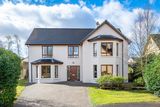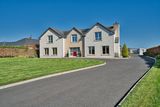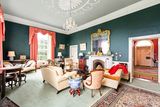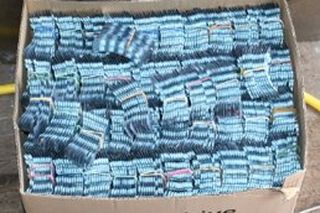The year Pope Francis came to live in Dublin
January 1980 marked a bleak beginning to a new decade in Ireland. Recession gripped the streets. The new year celebrations were short-lived as Charlie Haughey made his infamous television address to the nation warning that the country was living "away beyond our means".
The euphoria surrounding the visit of Pope John Paul II a few months earlier was all but a distant memory as families waved goodbye to their emigrant children after Christmas.
But amid the leafy avenues of Dublin 6, an Argentinian by the name of Jorge Mario Bergoglio had just landed in town.
Despite the economic anguish that engulfed the city, the imposing period homes and manicured parks of this affluent suburb must have seemed like a world away from the gritty barrios of Buenos Aires he called home.
And the shopkeepers of Ranelagh and local people he asked for directions as he strolled the tree-lined streets could never have imagined that this shy South American student would one day become pope.
But tomorrow morning, when Francis delivers his first Urbi et Orbi message to Rome and the world, listen out for his Irish brogue. For it was here, in Dublin, that the first pontiff of the New World learned his English.
Leaving the heat of the Argentine summer behind, he arrived at the prestigious Jesuit Centre in the Milltown Institute during the frosty days of winter to immerse himself in a language course with a local teacher.
At the time, the college of philosophy on the rambling Sandford Road campus was a hive of academic activity with Jesuit students coming from all corners of the earth to attend courses.
Nobody who lives there today remembers meeting their Latino colleague, but the July 1980 edition of the Jesuit bulletin, the Irish Province News, notes that among the "constant stream of visitors who found hospitality with us we may mention Fr Jorge Bergoglio, ex Provincial of Argentina and Rector of our Theologate in Buenos Aires".
An old ledger belonging to the community reveals that on January 21 he went to the bursar and borrowed £14 to buy language tapes.
At the time, Pope Francis was 43 and had just completed a seven-year spell as provincial (head) of the Jesuit order in Argentina. He left for Ireland at a time of profound danger in his home country, during the brutal military dictatorship.
During his three-month stay in Dublin, he attended daily classes and prayers, and in the evening mingled with other visiting students or was sat studying and reading in his room.
Fr Conall O'Cuinn SJ, the current rector of the Milltown community, which is the biggest Jesuit house in Ireland and home to 34 priests, was one of the first to discover the new pope had once stayed among them.
"When we found out he had stayed here with us, we were very excited," he says.
"To learn we had the first Jesuit pope was a wonderful surprise for all of us, but to know that he ate in the same dining hall where we eat our meals and slept within these walls, makes it all the more special.
"We are hoping that if he comes to Ireland, he will drop in to see us again and maybe even stay in his old room."
The origins of the Milltown Institute can be traced back to the 1880s when the Jesuits founded a School of Philosophy and Theology there.
Despite the changes to the campus since Bergoglio's visit, many of the buildings that he used during his stay are still the same: the vast dining room with its spotless parquet floors and huge arched windows, the marble-walled chapel, the heart of daily life for the community, and the magnificent library, which contains an exhaustive collection of theology tomes, including one written by the new pope shortly after his Irish visit.
While many of the bedrooms have been renovated, he stayed in a basic single room with little more than a lamp and chair for furnishings, in keeping with his austere tastes.
"What is likely is that his room would have had wonderful views over the city or the Dublin Mountains, which he might have found inspiring being a man who loves nature," says Rev Fergus O'Donoghue SJ.
"He was on a sabbatical when he came to Ireland so it was an ideal place for him. He had left Argentina after a traumatic time and would have been recovering from that. There are long walks right through the grounds of Gonzaga College and Milltown Park which he would have enjoyed.
"Milltown was a community in transition at the time. It had been built as a house for young Jesuits to study in and there would have been a lot of lay students, men and woman, coming and going, studying theology. He would have appreciated that the lifestyle was very simple."
It is that no-frills approach to life which has been the source of greatest fascination since his papacy began earlier this month.
This week, the 76-year-old broke the mould again by holding Holy Thursday ceremonies in a prison for young offenders rather than the Vatican. He has also refused to live in the 12-room papal penthouse on the top floor of the Apostolic Palace, opting instead to stay in a two-room suite in the Domus Santa Marta hostel where he lived with the other cardinals during his election.
As for his English, the world has yet to hear just how proficient he is, given that he has relied almost exclusively on Italian since becoming Bishop of Rome.
While some suggest this might be to avoid favouring some languages over others, it has also raised doubts about his command of English. But the fact that he learned the language in the city of Joyce, Wilde and Beckett gives reason for hope.
And if he's forgotten what he learned during his stay in 1980, who knows he might just come back for a refresher course.
Join the Irish Independent WhatsApp channel
Stay up to date with all the latest news














